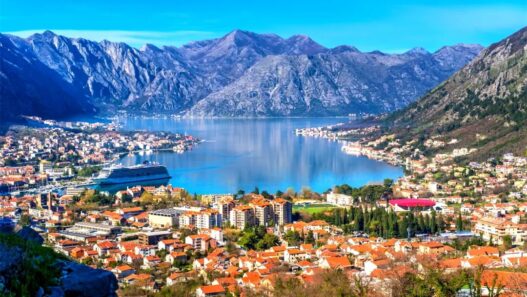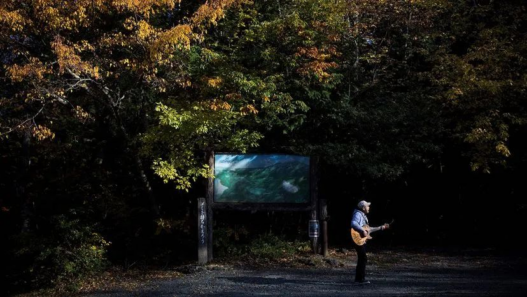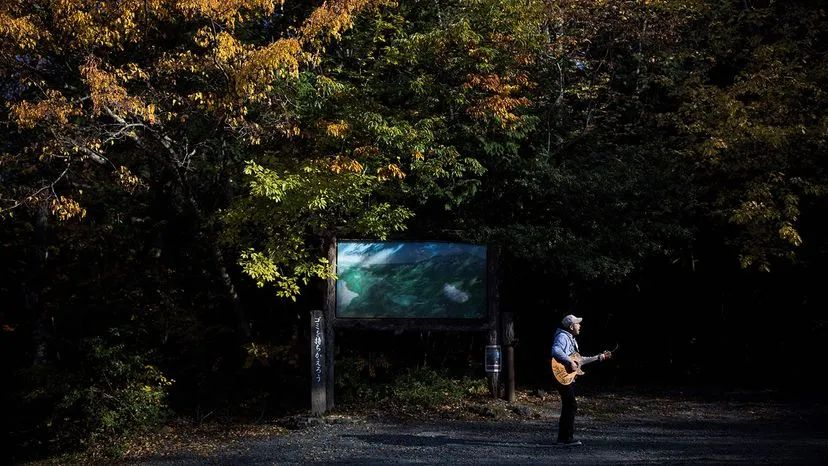Aokigahara Forest, located at the foot of Mount Fuji in Japan, is a dense woodland that has gained a dark reputation as a place where many people choose to end their lives. This led to the forest being widely known as the “Suicide Forest.” Despite ongoing efforts to raise awareness about mental health and prevent suicides, Aokigahara remains a symbol of despair and complexity.
A Path to Aokigahara
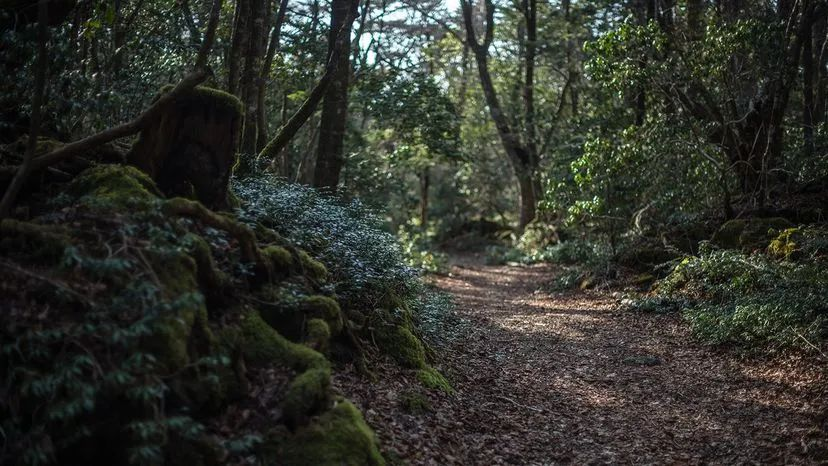
A small trail leads to the Fuji Five Lakes region where Aokigahara Forest lies. Over recent years, this dense forest has become a tragic location where people choose to commit suicide.
In 864 AD, Mount Fuji erupted for six months, burying an entire village beneath layers of lava. Over the next millennium, a dense forest grew over the hardened lava fields, forming what is now known as Aokigahara. Many Japanese refer to it as the “Sea of Trees” due to its vastness.
Located in the rural area of Yamanashi Prefecture, Aokigahara is only a few hours’ drive from Tokyo and is a popular destination for hikers. However, not everyone visits for the fresh air and beautiful scenery. For decades, those who feel lost in life have seen it as their final destination, earning it the name “Suicide Forest.”
According to the Yamanashi Prefecture government, over 100 suicides occurred in Aokigahara between 2013 and 2015. Many people travel from far away to end their lives in this fog-covered forest. Bodies are often found deep within the “Sea of Trees.” In an effort to stop the suicides, the Japanese government no longer releases data on suicides occurring in Aokigahara.
Why Is This Beautiful, Peaceful Forest Linked to Suicide?
So why does this beautiful and peaceful forest at the base of Mount Fuji have such a close association with suicide? Lindsay Nelson, a professor of political science at Meiji University in Tokyo, explored this in her book “Fear Circulation: Japanese Horror, Fractured Realities, and New Media.” One of the chapters discusses the connection between Aokigahara and suicide, focusing on the legacy of Japanese horror films.
Sacred Suicide Rituals
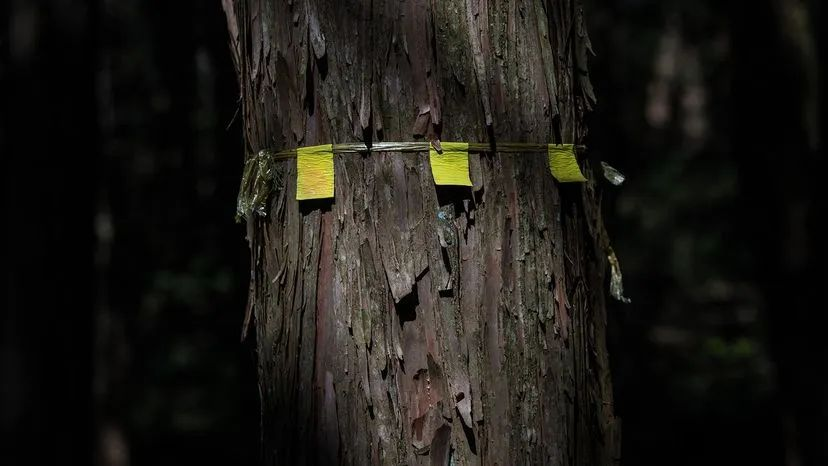
The forest’s dense nature has led people to tie ropes to trees or leave other markers. These marks help them find their way back if they change their minds or simply navigate the forest to avoid getting lost.
The association between Aokigahara and suicide is believed to have historical roots, dating back centuries to Buddhist monks practicing a horrifying ritual. Like other mountains in Japan, Mount Fuji was seen as sacred, and the forests surrounding it were also considered holy. For over 1,000 years, ascetic monks lived in the forests, engaging in extreme self-denial and meditation, ultimately leading to their death.
According to tradition, monks would meditate for 1,000 days in the forest, surviving only on leaves and tree bark. Afterward, they would be “buried alive” in underground tombs, continuing to meditate in their graves. The ultimate goal was to achieve the transformation of their living bodies into that of a Buddha, essentially mummifying themselves. In some areas of Japan, the mummified remains of 18 such monks are still displayed, though scientists believe they were actually mummified after death.
Perhaps this ancient suicide ritual provided a model for those seeking to escape modern life by retreating into the forest. Aokigahara might share a more direct connection with suicide than we initially imagined.
Aokigahara Forest in Media Depictions
In 1960, Japanese writer Seicho Matsumoto published a short story titled “Tower of Waves”. In the story, a pair of lovers are separated by forces beyond their control. In the final scene, the young woman writes a farewell letter to her lover, takes poison, and enters Aokigahara Forest to commit suicide.
Nelson explains that Matsumoto’s story sparked the media’s long-standing fascination with suicides among couples and heartbreak victims. As early as the 1920s, a young woman named Seiko leaped into the volcanic crater of Miharayama after falling in love with a forbidden female classmate, inspiring hundreds of young Japanese to follow suit. In 1935, Time Magazine published an insensitive article about this phenomenon.
Matsumoto’s story certainly helped to “mark” Aokigahara as a popular suicide spot in Japan. However, it wasn’t until the 1990s that the term “Suicide Forest” became more widely known, thanks to another book.
The Perfect Place for Death
The book “The Complete Manual of Suicide” by Wataru Tsurumi, published in 1993, is a literal guide on how to end one’s life. In it, Tsurumi discusses various methods of suicide, such as hanging, jumping from buildings, carbon monoxide poisoning, and overdosing on sleeping pills. He also explores how to “ensure” a successful suicide.
“This book caused significant controversy,” Nelson explains. “One chapter mentions Aokigahara Forest and calls it the ‘perfect place to die.'”
The book paints Aokigahara as an ideal place to disappear, where one’s body won’t be found by relatives. All you need to do is take a trip, never return. Tsurumi even explains which bus lines to take and how to avoid being noticed by park staff.
“Many copies of this book were found with the bodies of those who committed suicide,” Nelson adds.
Aokigahara’s notoriety grew even further beyond Japan’s borders when Logan Paul, a YouTube influencer, posted a video featuring a hanging body in the forest, facing widespread condemnation for his insensitivity toward the deceased. Most suicides in the forest are carried out by hanging.
Japan’s View on Suicide
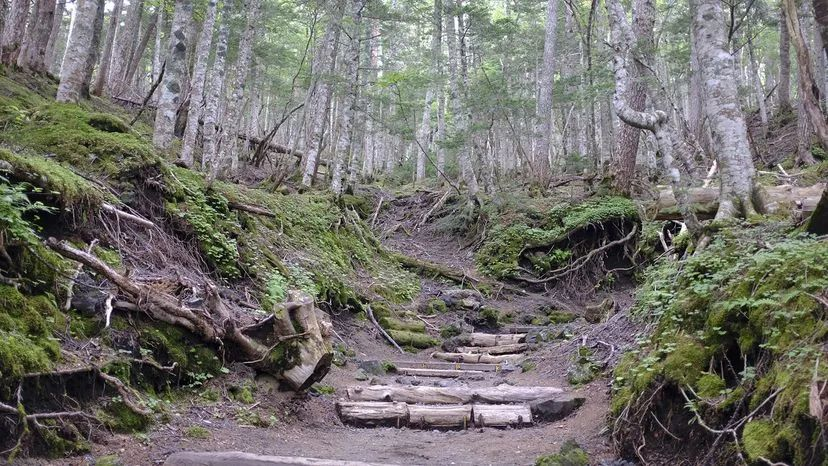
In 2018, Japanese musician Kiyoshi Watanabe played his guitar at the entrance to Aokigahara Forest. Over the years, he has used music to try to change the minds of people visiting Japan’s “Suicide Forest” seeking to end their lives.
Westerners often misunderstand Japan’s view on suicide, typically associating it with the ritual seppuku (harakiri) practiced by samurai to preserve their honor, or with kamikaze pilots during WWII. However, Nelson points out that while Japan lacks the religious stigma against suicide found in Western Jewish-Christian cultures, suicide is still regarded as a tragedy. People are shocked by the suicides in Aokigahara.
Despite this, Japan’s suicide rate remains high. In 1998, the suicide rate spiked to over 32,000; by 2003, it had reached 34,427, largely due to economic troubles. Since then, the suicide rate has fluctuated with economic conditions.
Japan has historically viewed suicide as a personal issue rather than a public health matter. Only recently has this perspective begun to shift. The government now invests in public service campaigns and crisis hotlines to prevent suicides. Yamanashi Prefecture has trained staff and volunteers to spot signs of distress in visitors to Aokigahara, and monitoring cameras and clear signage have been installed at the park entrance. The signs, written in Japanese, say:
“Your life is a precious gift from your parents. Please think of your parents, siblings, and children. Don’t keep your troubles to yourself. Talk about your worries.”
The signs also provide the suicide hotline numbers.
Inside the “Suicide Forest”
Although Aokigahara Forest may seem off-putting to many, it is also a picturesque place, perfect for hiking and connecting with nature.
Nelson visited Aokigahara years ago to research her book on Japanese horror films. Many horror movies set in Japan use the “Suicide Forest” as a backdrop, including the 2021 film “Suicide Forest Village,” created by the filmmakers behind the famous Ju-on series. Some media bloggers have depicted Aokigahara as a terrifying place full of abandoned items and bodies.
Nelson notes, “It’s actually really beautiful.” She points out how media often exaggerate Aokigahara’s “horror,” with abandoned cars and warning signs. In reality, it’s a picturesque hiking destination.
The forest features several hiking and walking trails, as well as two deep lava caves—Wind Cave and Ice Cave—which attract adventurers.
Another Notorious Suicide Spot
In addition to Aokigahara, Japan is home to another infamous suicide location: the towering Tojinbo Cliffs on the coast. In 2017, the number of suicides at Tojinbo suddenly decreased. Some believe this may be linked to the popularity of the game Pokémon Go.
Pokémon Go is an augmented reality (AR) mobile game developed by Niantic in collaboration with Nintendo and Pokémon Company. The game encourages players to explore the outdoors and catch virtual Pokémon, which may have inadvertently changed people’s behavior, helping them move away from suicidal thoughts. This phenomenon suggests that recreational activities and social interactions could have a positive impact on reducing suicidal tendencies. So, if you tend to stay at home, it might be time to get outside and enjoy some fresh air.






